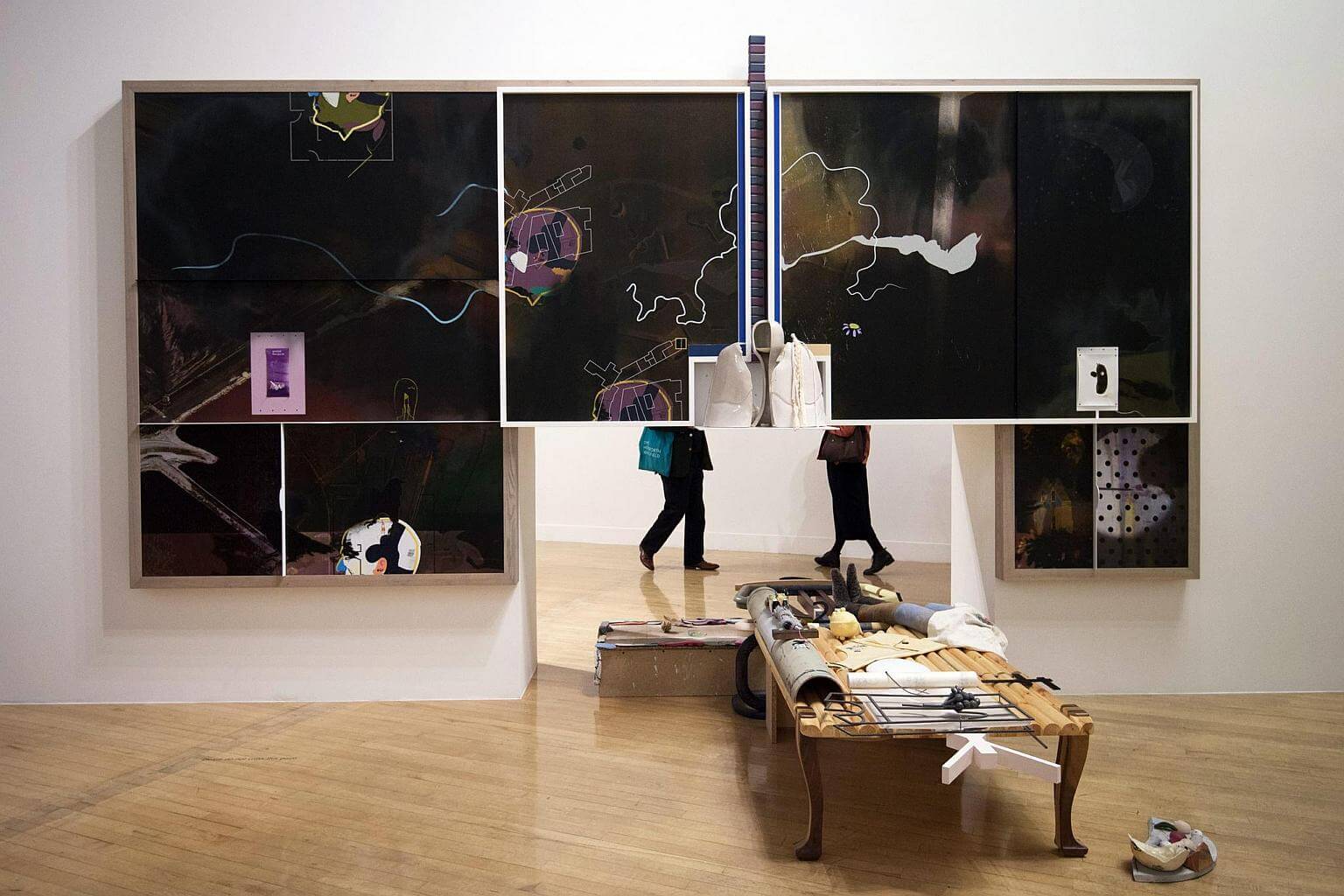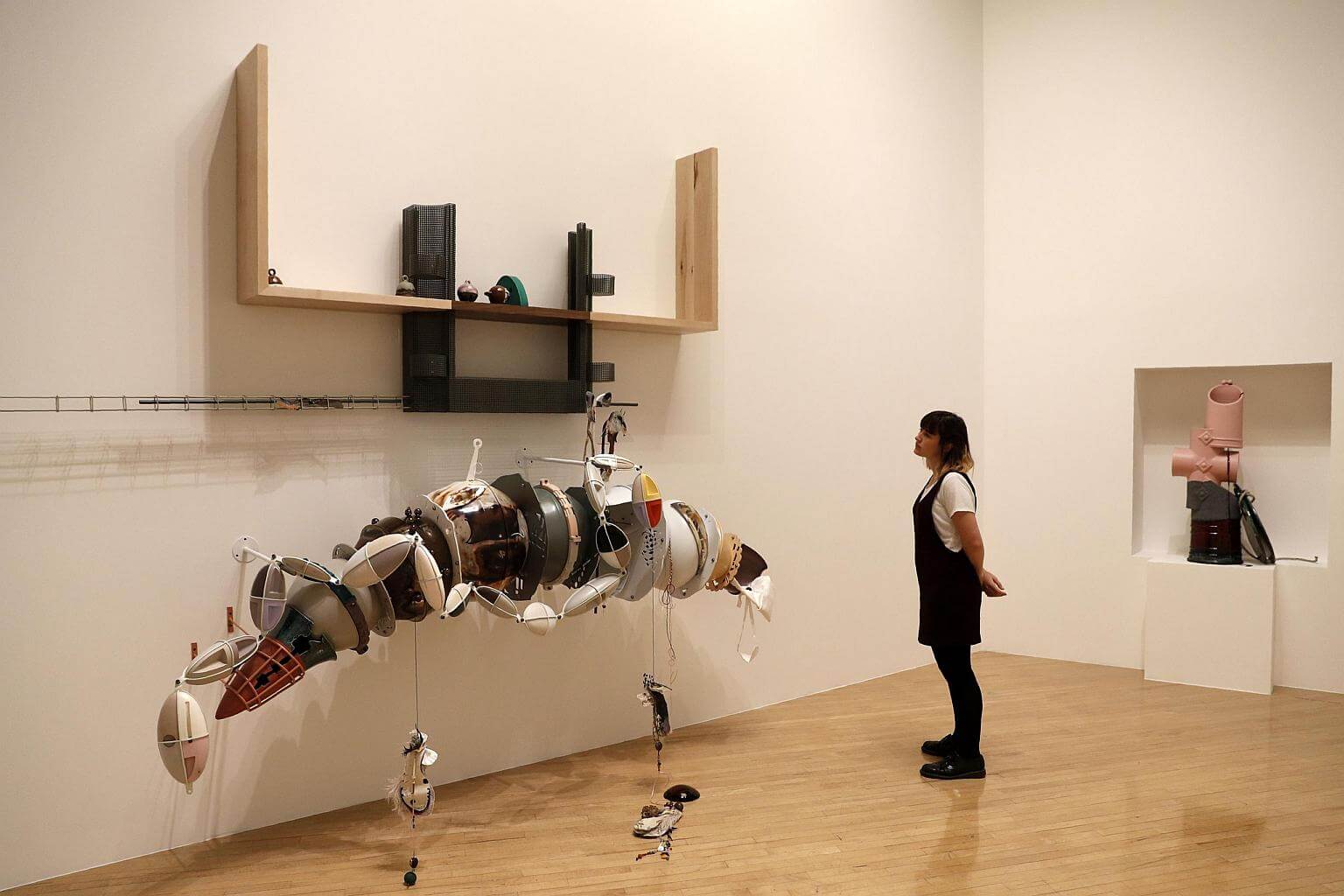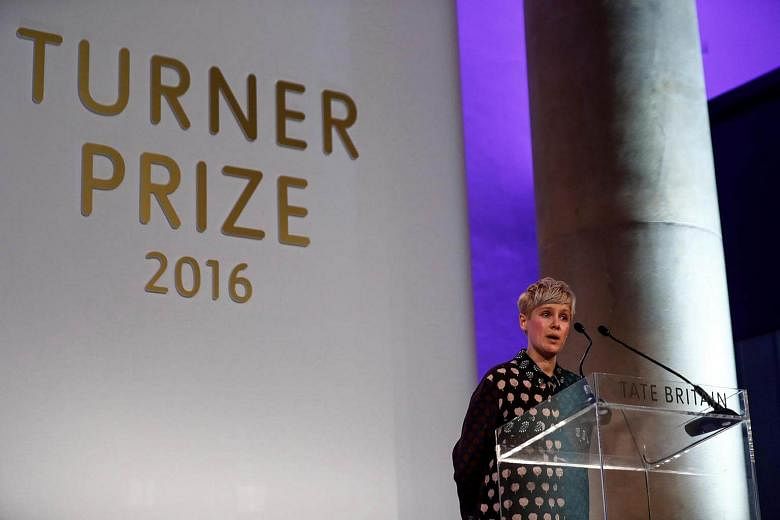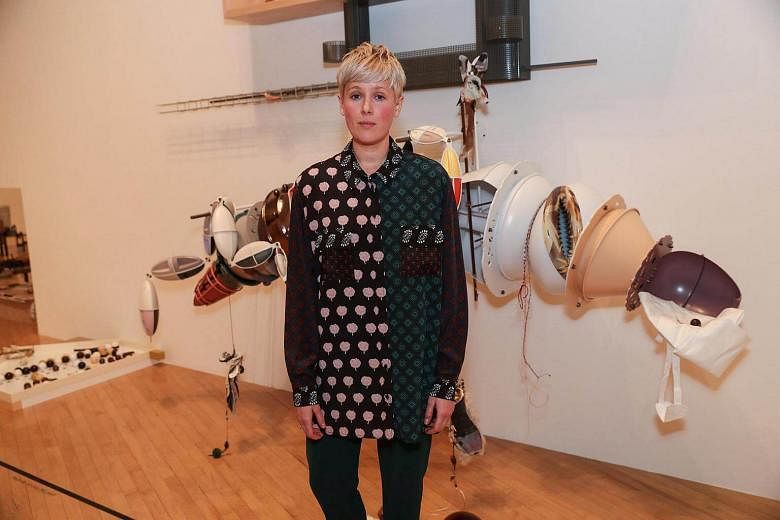LONDON (NYTIMES) - Helen Marten, a multimedia artist who makes puzzling, whimsical installations out of everyday materials, won the Turner Prize, Britain's top award for contemporary art, on Monday night.
The prize comes with a cash award of 25,000 pounds (S$45,163). It was given at a ceremony here broadcast by the BBC.
The prize is the latest in something of a winning streak for Marten, 31, who last month won the inaugural Hepworth Prize for Sculpture, a new award worth 30,000 pounds named in honor of British sculptor Barbara Hepworth.
The Turner, which was established in 1984, is given each year to an artist under 50 who lives or works in Britain. A four-person jury led by Tate Britain's director, Alex Farquharson, chose the winner.
Marten won for work including Eucalyptus, Let Us In, an exhibition of her art that appeared this year at the Greene Naftali gallery in New York, and for pieces she showed at the 56th Venice Biennale in 2015. Marten's abstract multimedia installations are made of assorted materials, like wood, glass, aluminum and feathers, and often include found objects.

In a 2013 New York Times review of her show at the Centre for Curatorial Studies at Bard College, in Annandale-on-Hudson, New York, Roberta Smith called Marten, then 27, a "precocious British artist" who "works in a light, frothy mode that might be called postmodern rococo". Art by all of this year's nominees is on view in an exhibition at Tate Britain, the smaller of Tate's two London outposts.
This year's other nominees were Michael Dean, a multimedia artist who was nominated for the shows Sic Glyphs and Qualities of Violence; Josephine Pryde, a photographer who often includes sculpture in her installations, and whose piece in the Turner Prize exhibition features oversize model trains; and Anthea Hamilton, who was chosen for Anthea Hamilton: Lichen! Libido! Chastity! which appeared at the SculptureCenter in New York. Artists are nominated for recent exhibitions of their work.

Widely regarded as Britain's most prestigious art prize, the Turner has also, intermittently, been a crucible in the culture wars, stirring public debates about what counts as art and what does not. Damien Hirst ruffled feathers when he was nominated for a body of work that included embalmed animals in formaldehyde. (He later won for another work that featured embalmed animals.) One of the most controversial nominees ever was Tracey Emin, whose installation My Bed, which featured an unmade bed strewn with liquor bottles and condoms, was nominated in 1999. The piece caused a media firestorm; two artists were also arrested at the Turner Prize exhibition that year for having a pillow fight on the artwork.
Last year's award went to Assemble, an architecture collective that won for revamping homes in a rundown district in Liverpool. That unorthodox choice, for a prize usually dedicated to work widely considered art, even if boundary-pushing, was praised in some corners of the art world, but criticized by others who saw Assemble's inclusion as a first step toward overlooking traditional artists.
The Turner Prize exhibition is on view through Jan 2, 2017.




